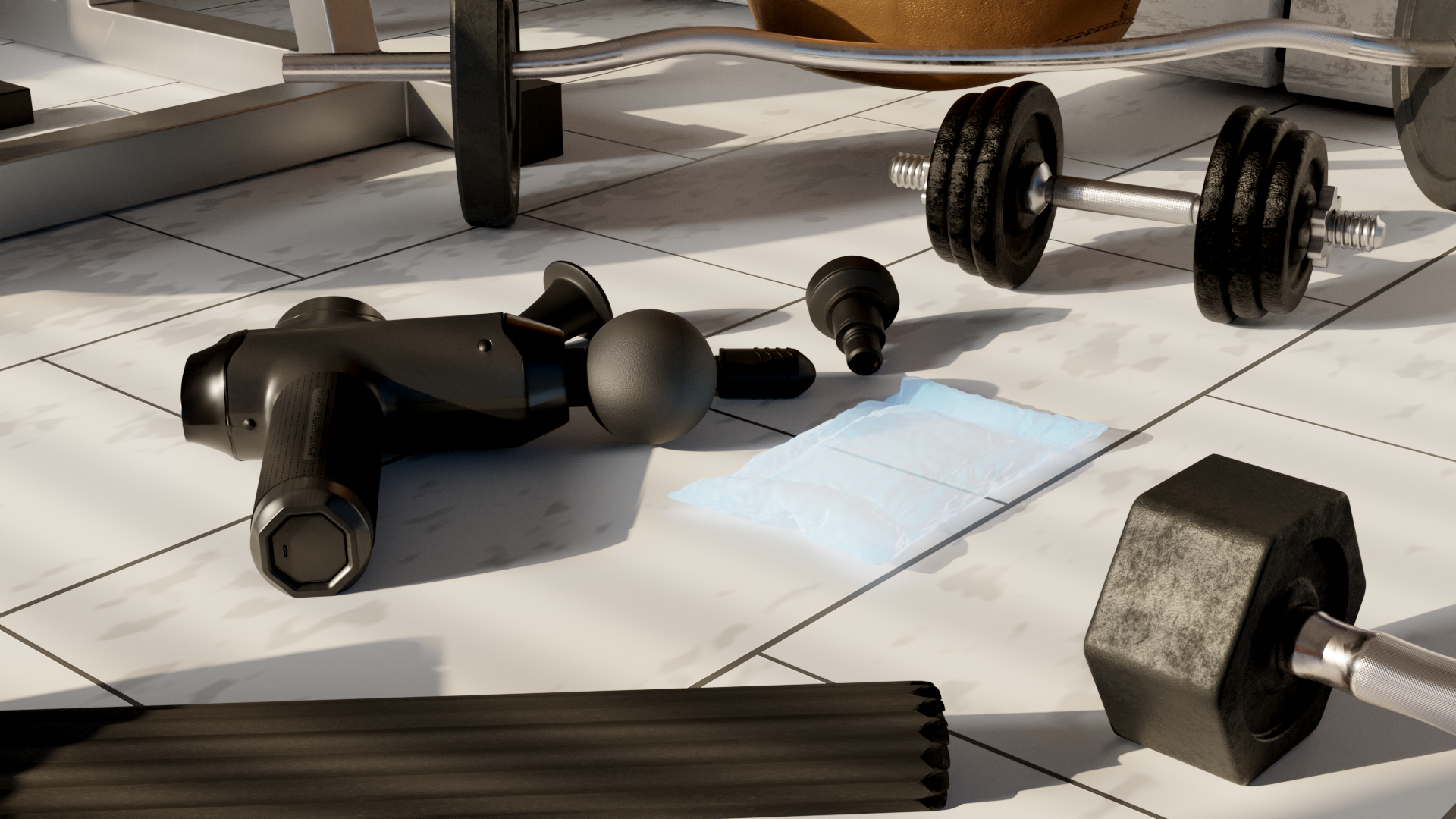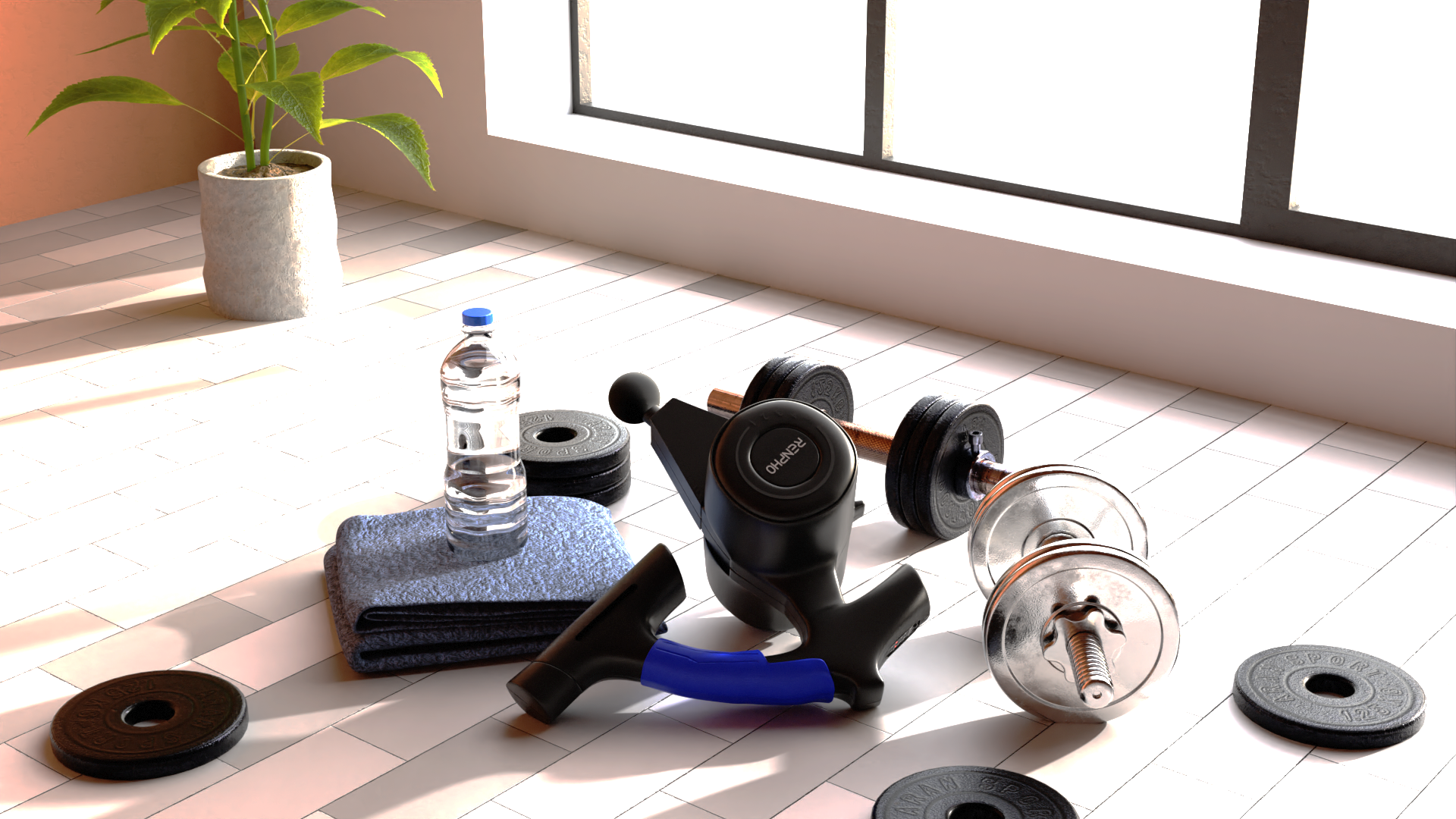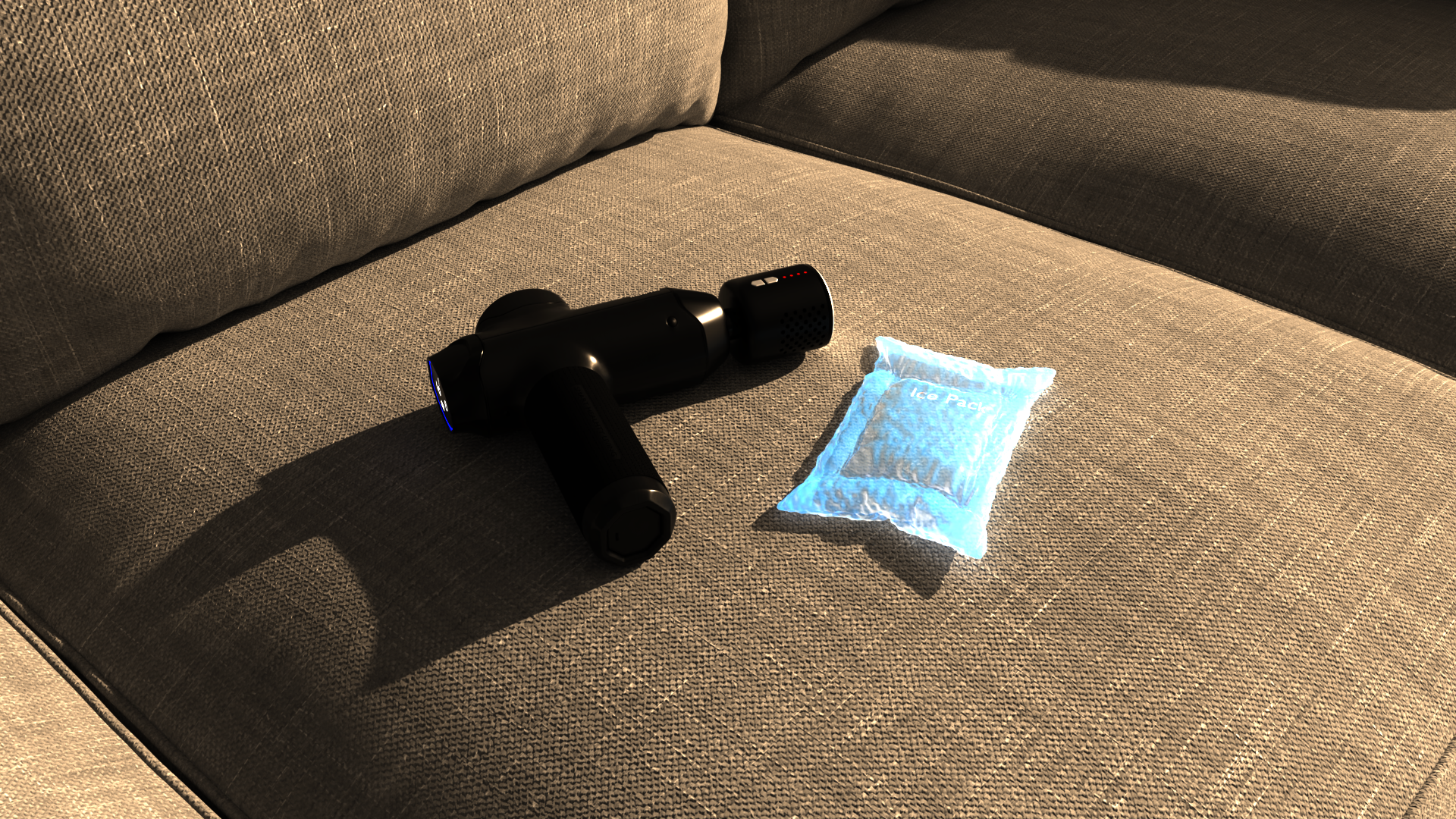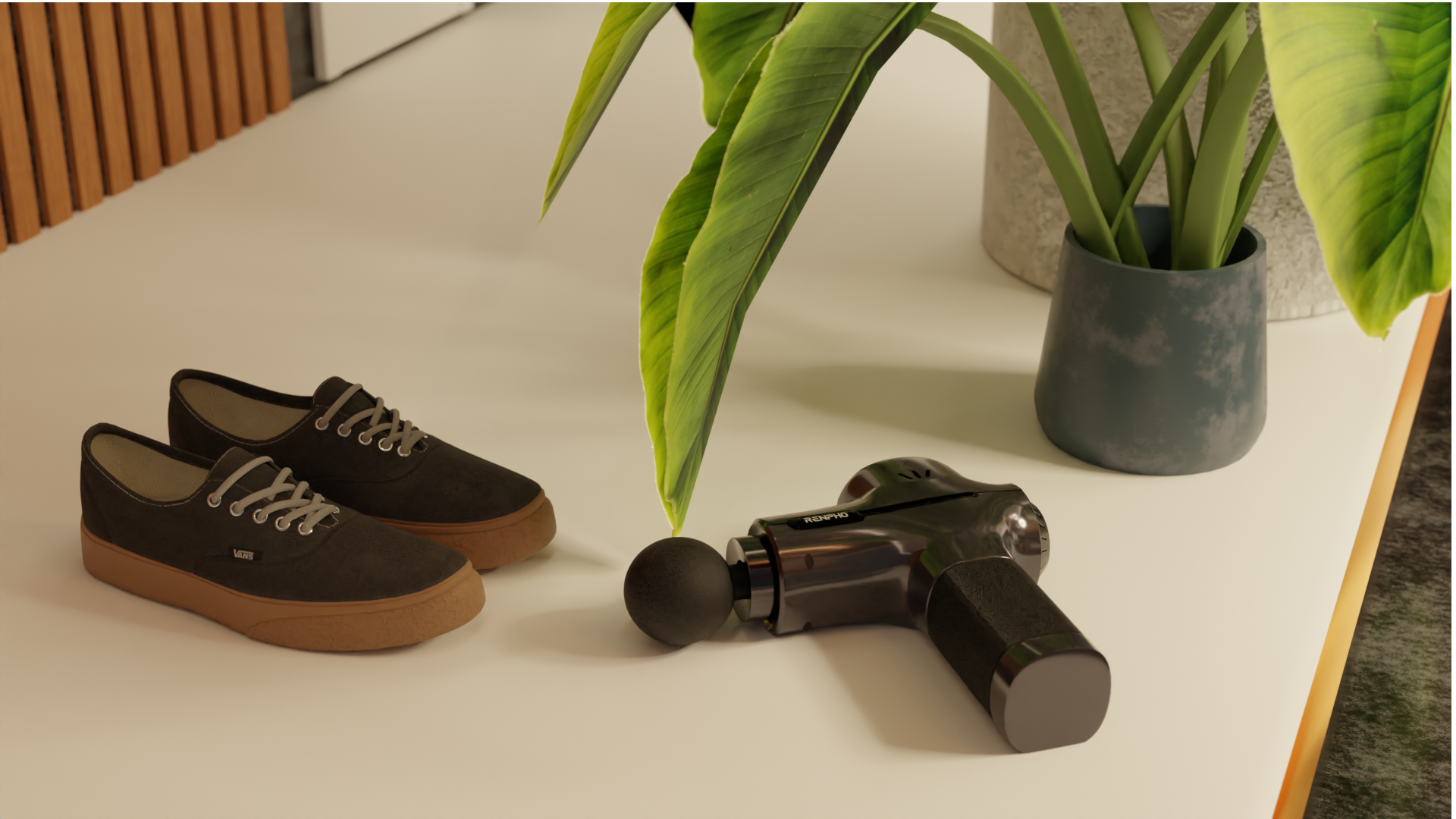How to Use a Massage Gun: Safety Tips and Easy Guide

Stay tuned to our latest news
Massage guns can effectively relax muscles and reduce pain, but improper use may lead to serious injuries. This article provides essential safety tips and how to use a massage gun.
What is a Massage Gun
Massage guns have become essential for enhancing wellness and physical recovery. These handheld devices utilize percussive therapy, delivering rapid pulses to penetrate deep muscle tissue. By stimulating blood flow, they effectively reduce soreness and tension after intense workouts or long hours of sitting. Furthermore, massage guns promote relaxation by soothing tight muscles and alleviating stress, making them ideal for athletes and those seeking relief from daily tension.
Benefits of Using a Massage Gun for Recovery
Using a massage gun offers numerous advantages for recovery and general well-being. Here are some key benefits that make it a valuable tool in muscle care:
- Reduced Muscle Tension: Just like the conventional hand massage, the massage guns remove tight and painful muscle knots. Stimulation of the sensory cells in the skin cuts off their contraction by the adjacent muscles, thus relaxing.
- Pain and Soreness Relief: While the use of a massage gun does relieve painful areas of tension and tightness, it goes a notch higher to override the actual pain signals that are sent to the brain and instead promotes the production of our feel-good hormones for better physical and mental well-being.
- Improving the Circulation of Lymph and Blood: Massage guns especially like a RENPHO Power Thermacool enhance the circulation of blood and lymph, as well as assisting in bringing oxygen and nutrients into the worked muscles to heal.
- Prevention of Muscle Fatigue: Muscle fatigue is that state wherein your muscles overwork and are less able to function. By helping muscles recover quickly, they allow for more efficient workouts and reduce the risk of injury.
- Improved Muscle Strength and Endurance: Regular use of a massage gun can enhance muscle performance and endurance, crucial for both athletes and fitness enthusiasts looking to build strength and prevent strain.
- Rehabilitation for Post-Injury Care: Massage guns are beneficial for post-injury by increasing blood flow to injured muscles, which speeds up healing and reduces the risk of re-injury.
The following are conditions of ailments that are becoming more commonly treated with massage gun therapy:
a. Muscle sorenessb. Sciatica
c. Muscle cramps and spasms
d. TMJ syndrome
e. Nonspecific low back pack
f. Shin Splints
g. Carpal Tunnel Syndrome
- Increased Muscular Movement and Tissue Flexibility: The deep tissue massage that massage guns offer can help relieve tension, increase blood circulation, and flush out waste. As a result, this improves tissue metabolism. This beneficial interaction speeds up tissue healing and helps to prevent damage. Regular exercise is supported by better tissue health, and this usually results in increased flexibility. In order to increase the depth of stretch and possibly increase the flexibility of the muscles and joints, massage guns are also frequently used during stretching.
- Preventing Injury: Because massagers increase the temperature of the muscle, which improves pliability and flexibility, they can help prevent injuries. This helps to lower the risk of injury and speeds up warm-up and recovery.
They can be used as a warm-up to get the muscles moving before an exercise. Using massage gun therapy as a warm-up before working out guarantees that your muscles are activated and given enough oxygen.
Integrating a massage gun into your recovery routine provides a proactive approach to muscle care, helping you feel more flexible, less sore, and ready for your next workout.
How to Use a Massage Gun: Step-by-Step Guide
A sore workout can leave you hobbling around for the next few days. It is a real pain literally and figuratively. The good news, however, is that making time for recovery is your key to controlling aches. In this regard comes this high-tech, powerful recovery tool called the massage gun.
This recovery tool such as Renpho Power Massage Gun has been added to the arsenals of even fitness experts and casual gym goers in favor of getting rid of soreness. The handheld devices, also known as percussion massage guns, have nozzles that pulse to deliver more blood flow to your muscles, releasing tension and byproduct waste in your muscles, hence helping you recover faster. The devices might seem tricky and intimidating at first, but figuring out how to use a massage gun is easier than you may imagine.
Taking the time to learn how to use a massage gun the right way is well worth it because you will avoid injury and gain maximum benefits. They make you have a wider range of motion and consequently help prevent people from overcompensating with dominant muscles while exercising, which is a mistake that can lead to injury.
Here's your guide on how to use a massage gun to avoid aches and pains.
Step 1: Identify the Body Part Area(s) of Tension
Search the areas of your body that are sore or tight. Then make sure there aren't any open wounds or irritation on the skin of the area you're going to target. Now that you've located the general region of soreness, search for the "area of the muscle with the most bulk and least amount of bony prominence.
Step 2: Preparation Before Use
Warm Up Your Muscles: Increase blood flow and prepare your muscles for a massage by engaging in dynamic stretching or light exercise. As a consequence, they become more responsive and adaptive.
Choose the Right Attachment: The majority of massagers include several heads, each of which is made to target a distinct muscle group. To begin with, use a soft, level, or cushioned head for novices or sensitive regions.
Step 3: Setting Up the Massage Gun
Choose Speed Settings: Start with the slowest speed to assess your comfort. Continue to increase the intensity if needed. Grip appropriately: Let the massage gun do the work; avoid pushing down too hard for best results.
Step 4: Targeting Muscle Groups
Concentrate on Specific Areas: Spend about 15-30 seconds on each muscle area. Target one area at a time. Do not spend too much time on a certain point to avoid bruising or uneasiness of the affected person.
Steer clear of bony areas: Avoid placing the massager directly on joints, bones, or inflammatory areas. For safety, stay in muscular, fleshy areas.
Step 5: Techniques During Use
Movement Patterns: Make slow, sweeping movements with the gun over the target. Additionally, you can move it back and forth along muscle fibers or in circles.
Pressure as Needed: If you have areas which feel tender (so-called "hot spots"), spend 20-30 seconds there using pressure suited to your tolerance. Use no more pressure than feels painful at 6-7 out of 10.
Step 6: Duration of Use
Allocate Time: To prevent overuse and potential harm, target any particular muscle region with the massage gun for no more than two to five minutes at a time.
Step 7: Post-Massage Care
Hydrate: Drink water after using the massage gun to help support recovery.
Step 8: Frequency of Use
Daily Use: You can use a massager on a daily basis, especially following an exercise routine or if you have tight muscles in particular areas.
Step 9: Cautions and Contraindications
Avoid using a massage gun on open wounds, recent injuries, or inflamed areas. Consult with a healthcare professional if you have any doubts about using it on certain areas of your body.
Safety Tips on Using a Massage Gun Effectively
Massage guns are very useful devices for reducing pain and relaxing muscles, but when used incorrectly, they can also result in serious injury. It is essential to comprehend the instructions in this part on how to use a massager effectively.
To use a massage gun safely, you will first need to identify which muscle you wish to work on, then turn the massager on and gently stroke over in a back-and-forth motion slowly, gradually increasing your pressure as needed. Examples are actually pretty normal and common and include: calves, hamstrings, quadriceps, muscles of the back, biceps, triceps, and forearm muscles.
Incorporating these safety tips will help maximize the benefits of your massage gun while minimizing any risks associated with its use. With proper technique and awareness, you'll enjoy all the advantages that this powerful tool has to offer for muscle recovery and relaxation!
When to use:
It depends on your preference; you use massage guns either pre or post-workout. Both share their benefits equitably in circulation around the body. Before a workout on the muscle group you intend to work on, using massage guns may help relieve stiffness, potentially even priming the muscle for increased activity. It can be applied after exercise to stimulate additional blood flow.
Although massage guns are usually safe to use every day, you should always consult with a doctor if you have any concerns or notice any unexplained changes in your muscle.
When Not to Use:
Do not use massage guns on freshly sustained injuries such as sprains or strains, especially over an area that is in pain or swollen. Stop using massage guns if skin starts to redden or become irritated. Pressure or time should be reduced when using massage guns in cases where one experiences pain or in cases where too much power is applied. Massage guns should only be used on muscles and not on joints, bones, or nerves. It’s crucial to consult a healthcare professional if you have any concerns using the massage gun.
Where to use:
In the same way that traditional massage therapy does, massage guns can help you relax and reduce tension while you're at home. Below are professional suggestions on how to apply a massager to particular areas of your body that are causing discomfort, such as your knee, back, shoulders, and neck.
Knee Pain. Using a massage gun can help relieve knee pain, but it's crucial to do so safely. Start by consulting a healthcare professional. Use the lowest setting and gradually increase intensity, focusing on surrounding muscles like the quadriceps and hamstrings rather than directly on the knee joint.
Back pain. Back pain can stop you from doing the simplest of everyday things, not to mention training hard. A couple of minutes of self-treatment with a massage gun cuts tightness, accelerates recovery, and knocks the back pain on the head.
Shoulder pain. Everyone experiences shoulder pain differently; it can range from a mild nagging sensation to chronic discomfort. However much you experience, on whatever rung of the pain scale that you exist, the percussive massage of a massage gun gives you targeted pain relief in return.
Neck pain. Neck pain can be caused by a variety of factors, including modern life and exercise. However, when neck discomfort comes, a massager can provide nearly immediate relief.
FAQs About Using Massage Guns
Q1. Can they improve the quality of your workout or avoid discomfort in your muscles afterward?
Massage gun therapy can significantly reduce DOMS ( Delayed-Onset Muscle Soreness ). A 2014 study shows how vibration therapy is an effective form of prevention and management of DOMS. Added to this, the evidence that vibration therapy enhances muscular endurance and power may also reduce DOMS generally by providing better muscular adaptations over time.
Q2. Is it okay to use a massage gun every day?
Indeed, by spending a specific amount of time looking after your muscle tissue everyday, you can prolong life and avoid future musculoskeletal conditions. Your body needs time to recover after a massage with a massage gun.
However, as with anything, it's essential not to get carried away applying pressure to any one muscle section for longer than two minutes in one session. Start on the lowest speed, and work your way up. It's especially important to see a doctor before using a massager if you have any nerve-related issues or an injury.
Q3. What should you think about when selecting the appropriate massager model to purchase?
When selecting the appropriate massage gun model to purchase, consider the following factors:
- Power and Speed Settings
Look for a massage gun with multiple speed settings to customize intensity levels according to your needs.
- Amplitude
A higher amplitude provides deeper tissue penetration. Consider your comfort and the type of massage you prefer.
- Battery Life
Check the battery life and charging time. A longer battery life is essential for extended use without frequent recharging.
- Weight and Portability
Choose a lightweight and portable model if you plan to use it on the go. Ensure it's easy to handle and carry like a Renpho Lite Massage Gun.
- Noise Level
Some models can be quite loud. Look for a quieter option if you prefer a more discreet experience.
- Attachments
Different attachments can target various muscle groups. Ensure the model includes a variety of heads for versatility.
- Ergonomics
A comfortable grip and ergonomic design make it easier to use the massage gun effectively without straining your hand or wrist.
- Durability and Warranty
Check for build quality and a good warranty. A durable model will last longer and provide better value.
- User Reviews
Research customer reviews and ratings to gauge real-world performance and satisfaction.
- Price
Set a budget and compare different models within that range. Remember that higher price doesn’t always equate to better quality.
By considering these factors, you can select a massage gun that best suits your needs and preferences, ensuring effective and enjoyable use.
Q4. Are there any possible disadvantages to using a massage gun for therapy?
We have covered some of the significant benefits of how to use a massage gun, but what about its disadvantages as well?
Massage guns have disadvantages, such as the potential to aggravate previous injuries or chronic illnesses. If the person fails to use the massage device properly, this risk is increased. Training on how to use massage guns effectively can reduce these risks. For additional information, see the section on Safety Tips on Using a Massage Gun Effectively above.
Making the Most of Your Massage Gun Experience
RENPHO Massage guns are a great deal in terms of their strength when it comes to helping muscles recover. There are some benefits from having massage guns, such as removing tension, easing pains, and facilitating blood flow. Equipped with the capability to send fast pulses into the depth of muscles, massage guns enhance circulation, ease soreness, prevent muscle fatigue, build more strength, and increase one's endurance level.
Safely use a massage gun by finding tender areas, warming up your muscles, and selecting an attachment. Apply it at low speed with gentle pressure and target specific muscles without reaching the joints or bones, doing it without lingering over any single spot. Using it daily after a workout may keep your muscles elastic, speeding up the recovery pace.
Introducing how to use a massage gun into your recovery routine improves overall performance, decreases the chances of injury, and enhances long-term well-being. Useful for athletes, and even more so for ordinary individuals seeking relief from everyday tension, these devices are a valuable addition to any wellness program.
When used correctly, massage guns can be quite helpful for reducing soreness and supporting muscle recovery. Choosing the appropriate model is important, and consideration must be given, particularly for people who already have injuries or nerve-related conditions. Knowing how to use a massage gun correctly can help minimize risks and optimize benefits.
Renpho Health Tips
-

How to Use a Massage Gun on Your Legs for Optimal Recovery
January 22, 2024
Read more >
-

When to Use a Deep Tissue Massage Gun for Optimal Workout Results
January 11, 2024
Read more >
-

Can Massage Guns Provide Relief for Strained Muscles?
January 10, 2024
Read more >
-

How Massage Guns Can Help Alleviate Plantar Fasciitis Discomfort
March 6, 2024
Read more >
-

Looking for the Best RENPHO Percussion Massage Gun for Tailored Muscle Relief? We Got You!
March 14, 2024
Read more >





